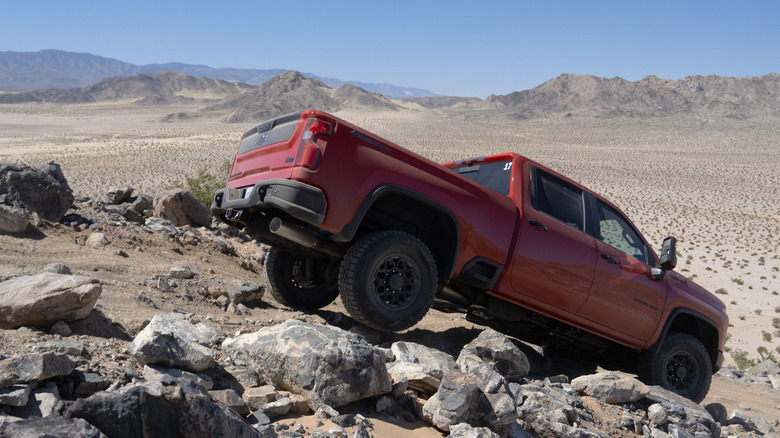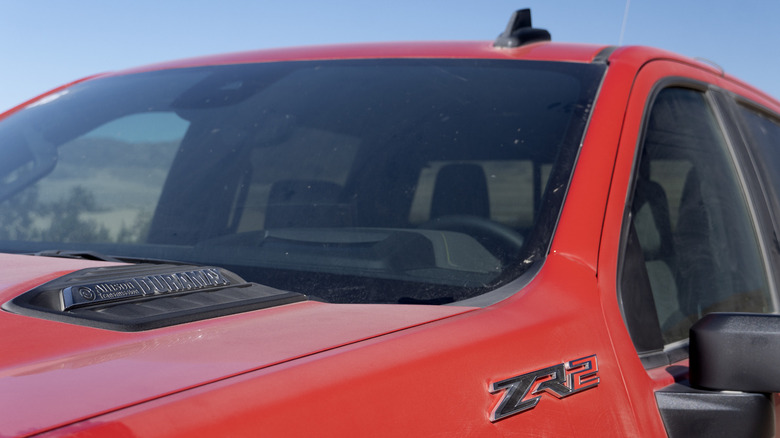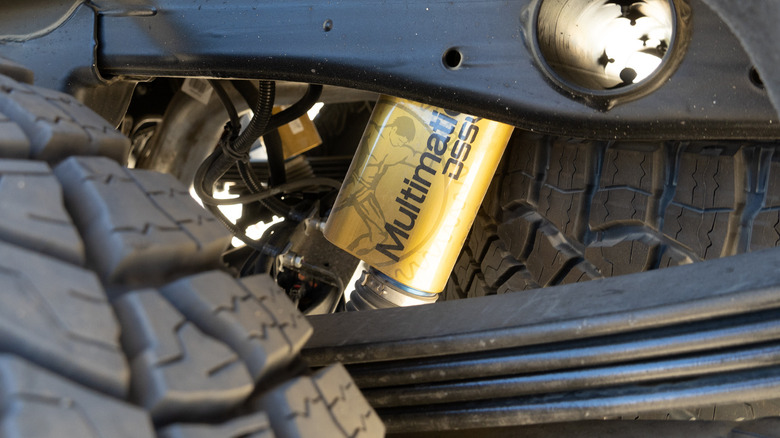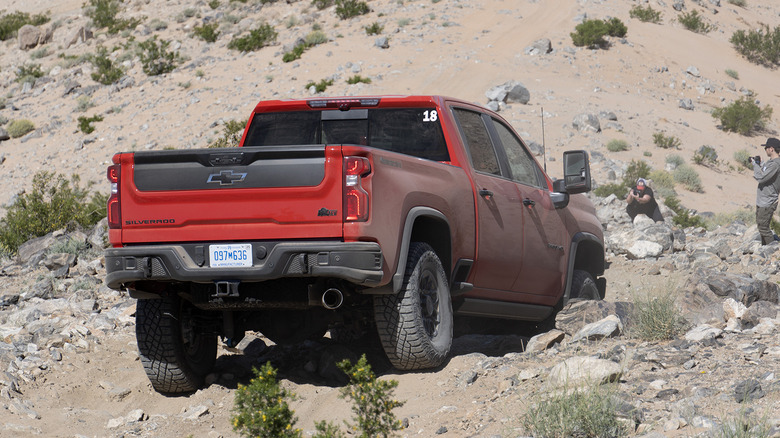Is The New Chevy HD Bison Diesel Too Heavy For Real Off-Roading?
Chevrolet recently hosted select media for a day out in Johnson Valley OHV testing the new "Bison Family" of hardcore off-roading pickup trucks. Built in partnership with American Expedition Vehicles (AEV), the Bison range adds all the goodies that off-roading aficionados might typically buy from aftermarket companies to enhance the performance of the new generation Colorado pickup but also, for the first time, on the Silverado's ZR2 variants, too.
The Colorado in particular takes a big step up in capability, with larger 35-inch tires, new suspension mounting points, and nifty hydraulic jounce control stops built by Multimatic. At the top of the lineup, the first-ever HD Silverado (in the 2500 class) also receives the ZR2 Bison treatment on a truck that already comes with the beefy Duramax diesel and Allison transmission. The resulting pickup truck weighs an absolutely absurd 8,495 pounds, though. So it only makes sense that throughout a day on and around the King of the Hammers racecourse, the question kept coming up: Is the Heavy Duty Silverado ZR2 Bison simply too heavy for real off-roading?
Dealing with Heavy Duty weight off-road
As many outlets will no doubt report, rock crawling down a minimally steep trail resulted in some damage to electronically retracting running boards equipped on more than a few HD Bisons. And this massive pickup almost makes those running boards a requirement, if just to help climb in and out of the lifted cabin (aesthetically, they might resemble rock sliders, but rest assured they are not).
The HD Bison only adds the additional ground clearance of larger tires versus the LD, but the longer wheelbase of both trucks combines with all that weight to make choosing the right line extra mandatory to avoid any damage to the running boards or driveline components. In comparison, the LD Bison package surprisingly only uses 33-inch tires, which seems like a consideration towards average MPGs across Chevrolet's entire fleet. But Chevy engineers on site claimed the 1500-class Silverado frame simply wasn't designed to handle 35s, so instead the LD Bison strictly gets the AEV steel bumpers and cold-stamped boron skid plates—and not even a body lift to help compensate. In total, the LD when equipped with the now-standard 3.0-liter Duramax diesel weighs only 6,121 pounds.
Suspension decisions differentiate Chevy pickups
Stepping up to the HD Duramax means an additional half inch of ground clearance, with the same wheelbase and armoring, but at least 2,374 more pounds, too. And unlike heavy or super duty trucks from Ford or Ram, Chevy decided years ago to eschew solid front axles on its 2500 and 3500-class pickups in favor of independent front suspension that uses torsion bars rather than coil springs. Combined with stellar DSSV shock dampers from Multimatic, the setup results in far better on-road driving dynamics and compliance over lightly rutted or washboard roads.
Fans of Jeep's Wranglers and Gladiators always bemoan the Ford Bronco's independent front suspension, which offers less predictable articulation than a solid front axle. But the tradeoffs come during 99% of normal driving, which probably explains Chevy's decision for HD pickups—not to mention saving even more weight on an already hefty truck. And for the most part, the HD Bison proved at Johnson Valley that it can handle all the off-roading reasonably asked of it. Carrying too much speed through whoops can even cause unintentional jumps. Getting airborn, the Multimatics and torsion bars amazingly prevent the truck's suspension from bottoming out, even if the experience from the driver and passenger seat is not particularly pleasant.
An HD diesel can get the job done
On more technical terrain, the solid rear axle equipped with leaf springs and a standard electronically locking differential affords plenty of confidence—or maybe too much, as certain drivers discovered when a first scrape on the running boards while stepping down a moderate ledge resulted in pieces dangling and dragging down a hill. In a truck this large, choosing a judicious line, then driving slow and steady, becomes the name of the game. As off-roaders often say, "To finish first, you must finish."
Maybe any potential buyers planning to seriously wheel an HD Bison should skip over the running boards on the option sheet. Or better yet, add some real rock sliders instead. But in reality, many trucks on the outing with drivers that chose better tire placement in consideration of the HD Bison's size and weight (admittedly something of a challenge given the enormous hood) managed to finish the day with running boards intact.
Throw in four-low, a rear locker, off-road mode, and paddle shifters to keep the Allison trans in the proper gear, and the HD can definitely haul or tow with ease and still get the job done off-road. But after climbing out of the peppy, smaller, and nimbler Colorado Bison, getting the job done in an HD Silverado definitely feels like more work.



